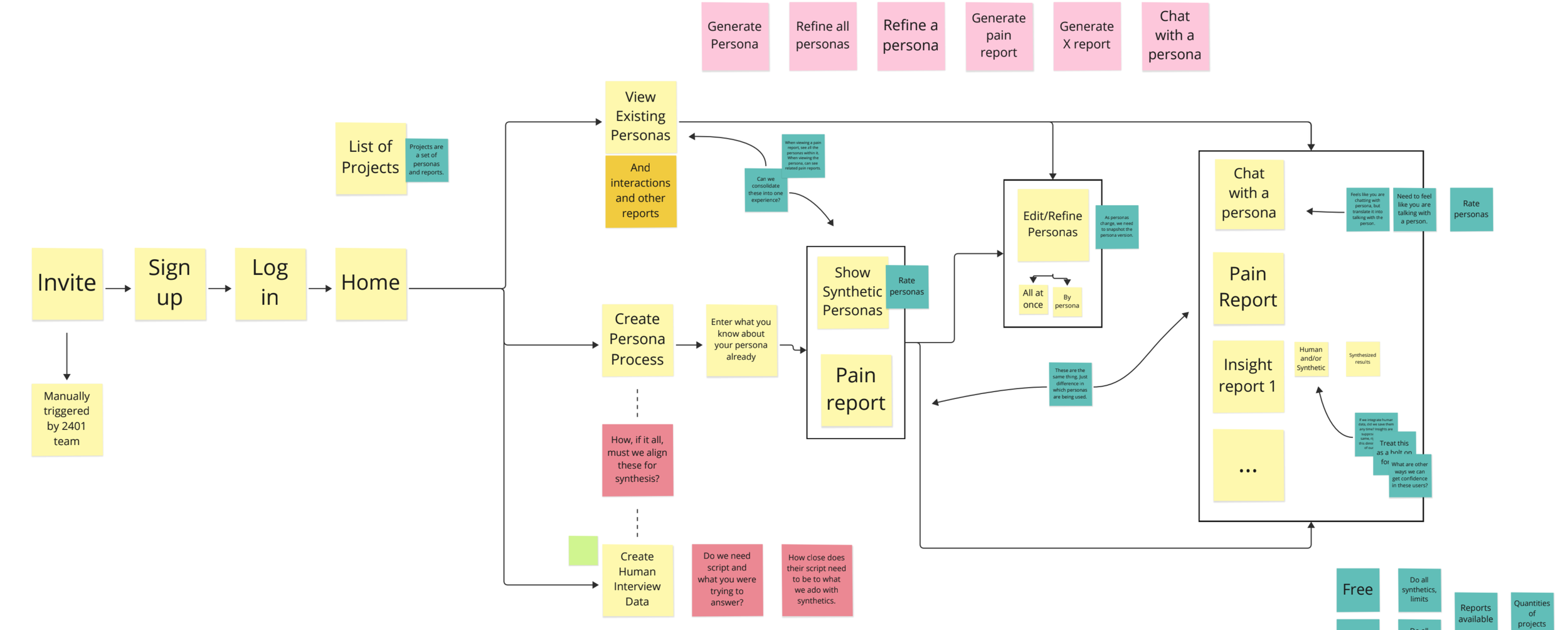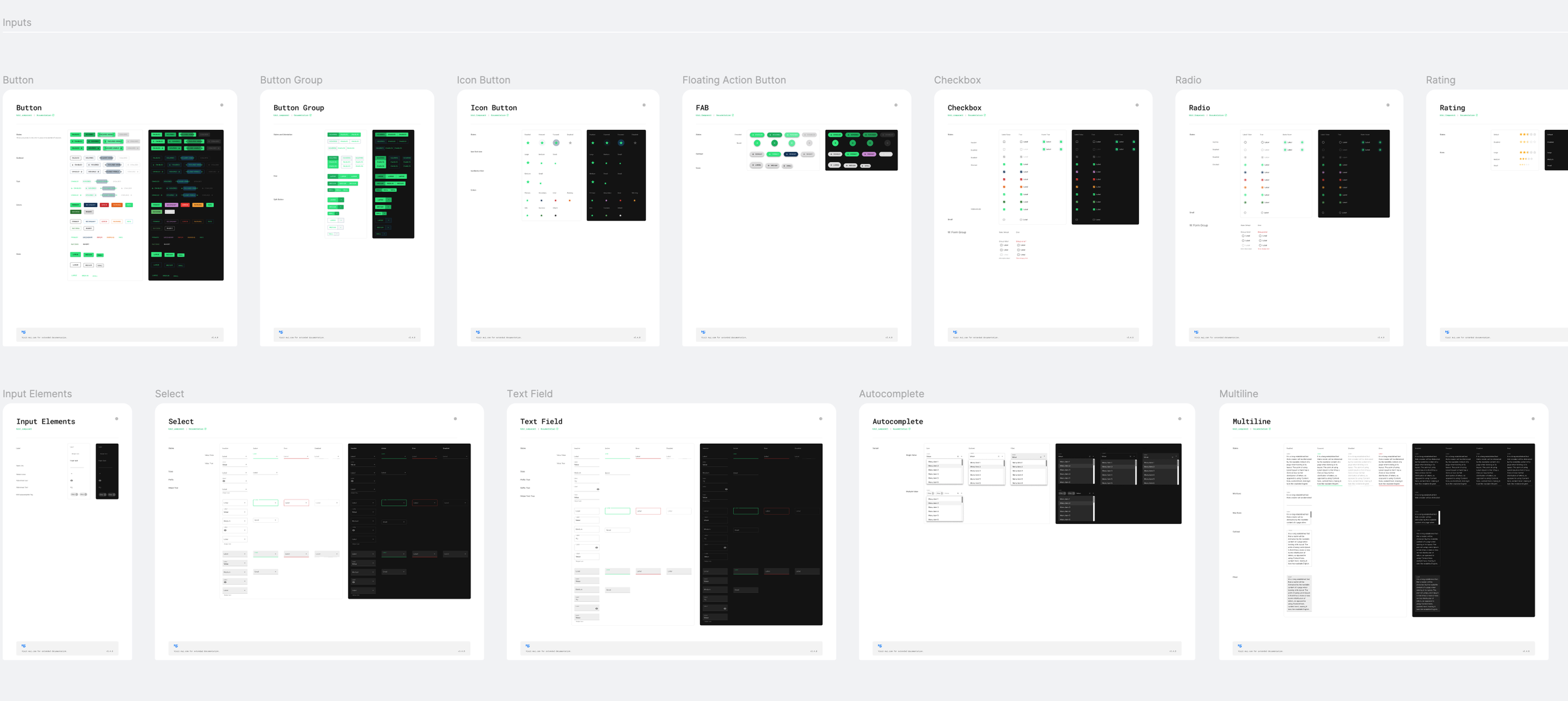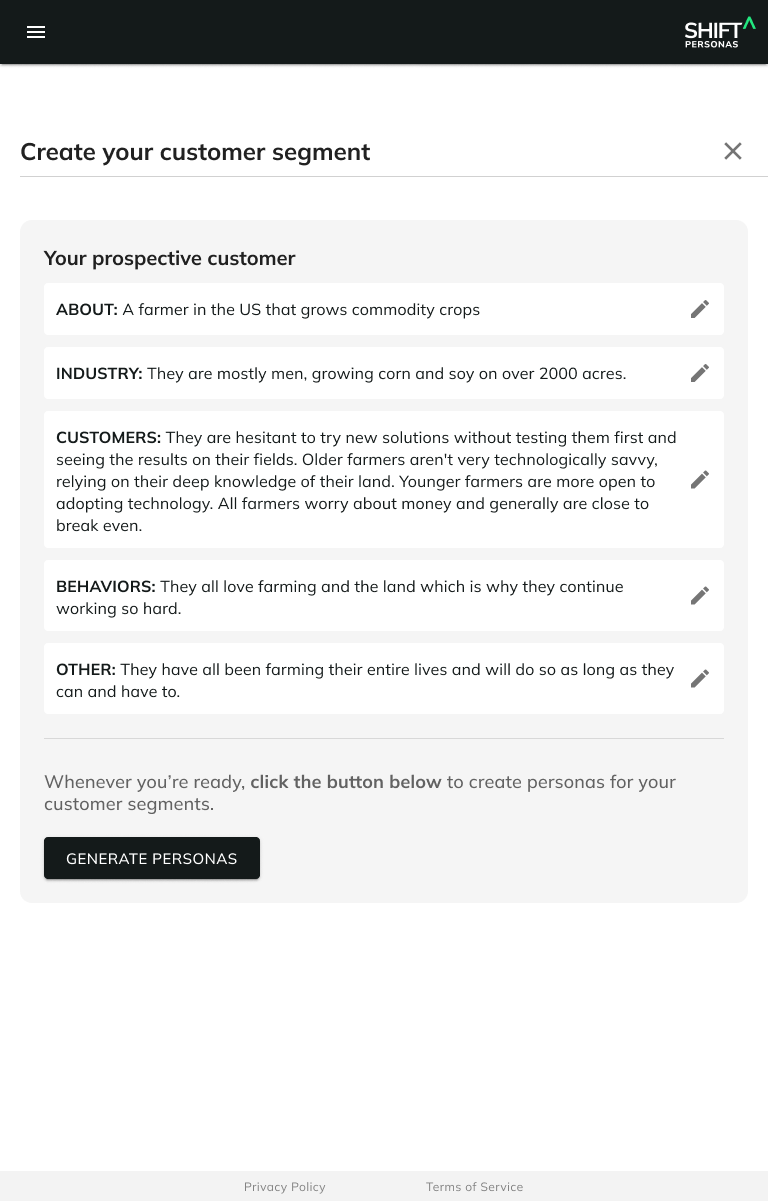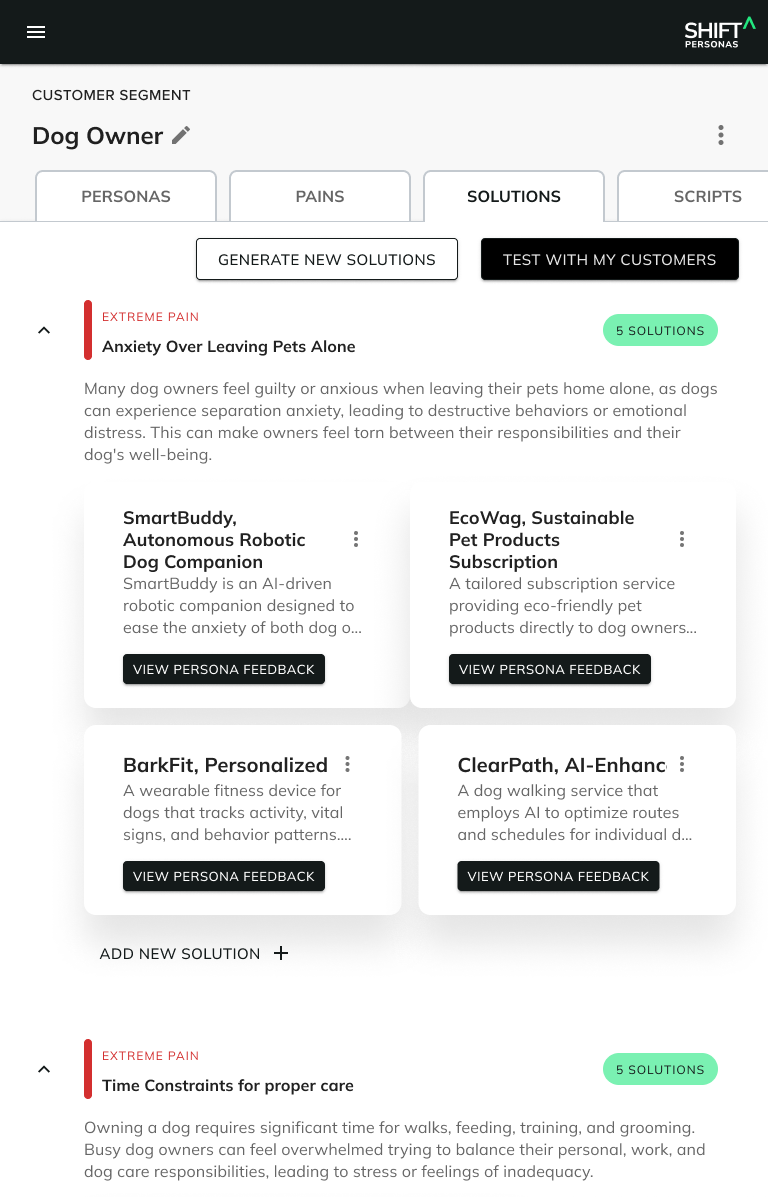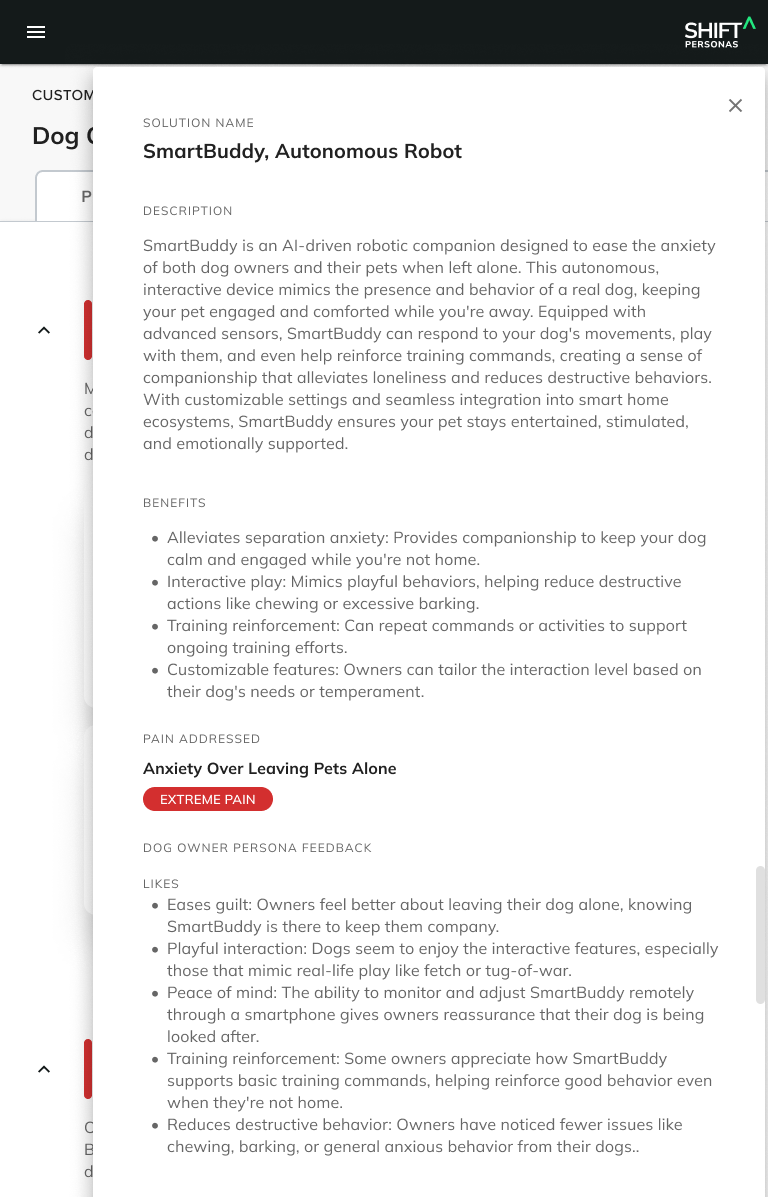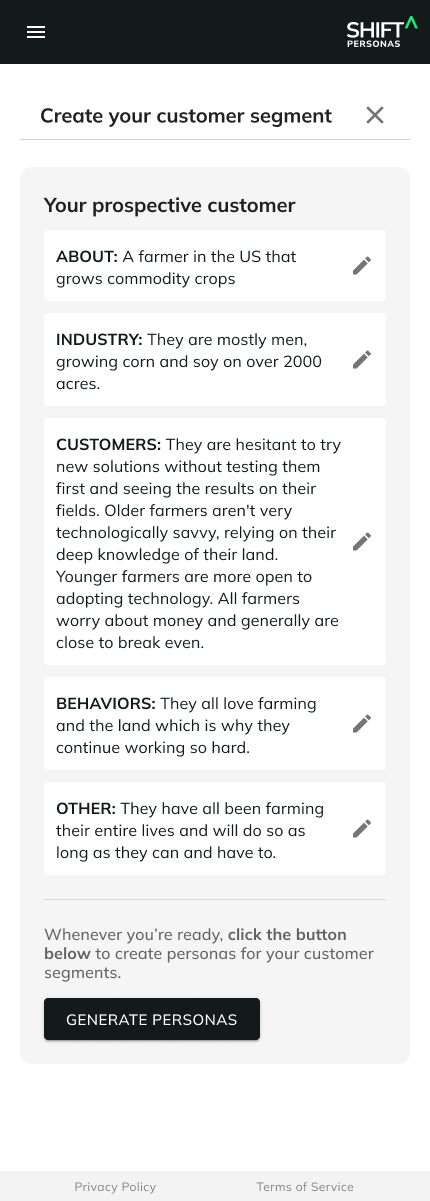Personas
My Responsibilities
Shift AI, formerly 2401, the software development team for Mach49 set out to improve our overall client experience while leveraging the power of AI for venture building.
In my role on this project I conducted user research, developed and designed low fidelity prototypes for testing, and designed final high fidelity deliverables for final development.
Overview
The AI-powered Personas tool redefines venture building by simulating real user interactions to swiftly uncover pain points and test solutions. This tool reduces the time required for traditional interviews, automating key processes and allowing teams to iterate faster.
Problem Definition
The challenge we faced was the inefficiency in recruiting participants for interviews to validate or invalidate hypotheses during the customer research phase. Traditional interviews were not only slow but failed to deliver deep insights promptly, leading to delays in iterating and strategic decision-making for new venture teams.
Solution:
We implemented AI-powered Personas, which simulate user interactions, enabling quicker open-ended interviews, rapid value proposition testing, and more efficient iteration of solutions. This saved time and reduced delays in the venture-building process.
Research and Design Decisions
To understand how users wanted to create and refine personas, we interviewed internal Mach49 and client users. Through testing with low fidelity prototypes, we identified key insights that directly shaped the design of the AI-powered Personas tool:
Flexibility in Editing Personas: Users expressed a need to refine personas both as a whole and individually. In response, we designed two editing modes: a chat-based interface for making global changes across all personas, and a popover menu for making specific edits to individual personas. This dual approach gave users full control over how they adjusted the personas.
More Unique and Creative Outputs: Initial feedback revealed that personas were too similar, leading to the refinement of the back end to ensure more varied and creative persona outputs. This made each persona more distinct and relevant to the user's needs.
Persona Content Customization: We found that users needed clear information on how their inputs were shaping persona traits. This resulted in the tool providing real-time feedback on persona creation, ensuring that users could see the direct correlation between their input and the persona's development.
Script Generation: To streamline the testing process, the tool automatically generated interview scripts based on the most severe pain points, saving teams time and improving efficiency in their testing efforts.
Information Architecture and User Flows
User Segments: Personas were grouped by specific user segments, allowing for targeted exploration of different stakeholder groups. This enabled teams to focus on identifying the most critical pain points, solutions, and feedback for each segment. By aligning this design with how real-life research is conducted, teams could easily switch between different user segments and focus their efforts on segment-specific insights.
Simplified Flows: The chat-based persona creation process reduced complexity and made it easy for teams to iterate. Users could also switch between viewing the whole persona set and editing each persona individually.
Deliver Phase
Design System: We utilized Material UI components for consistency across the platform. When necessary, new components were created for the unique needs of the Persona tool.
Handoff to Engineering: Documented flows and designs were annotated for seamless handoff to the engineering team. Regular check-ins with engineers helped ensure that the design remained feasible throughout development
Key Features
Chat-based persona creation process and chatting with your persona.
Solution idea generation based on persona pain points
Pain point report generation and interview script automation.
Synthetic feedback to supplement real-life value proposition testing
Implementation and Outcomes
Training and Deployment: Internal training sessions helped teams learn to use the AI persona tool effectively. Once deployed, user engagement was strong, and feedback was positive.
Efficiency Gains: Traditional interviews were reduced from five or six per day to one or two, supplemented by insights generated from AI-powered personas.
Improved Data Quality: By quickly identifying pain points and testing solutions, the AI personas tool accelerated the venture-building process without compromising on insight depth.
Reflection & Learnings
Challenges: One major limitation of the chat interface was that users could not conduct interviews across multiple personas at once. This made it harder for users to identify patterns and themes across personas, something that would have mirrored real-life customer interviews more closely. Time constraints also prevented the ability to dig deeper into the pain point report for further insights.
Key Learnings:
While the AI personas tool provided valuable early-stage feedback, users would benefit from the ability to interview multiple personas simultaneously and synthesize findings across the personas. This is something I would prioritize in future iterations.
Adding features like deeper exploration of pain points and pattern recognition would have enhanced the usability and depth of the insights.
Next Steps and Iterations
Usability Testing: Future iterations could benefit from testing with real-world clients to ensure the AI personas fully replace certain traditional interview methods without sacrificing the depth of insights.
Feature Expansion: Including the ability to interview multiple personas simultaneously and better synthesis tools would strengthen the tool’s ability to mimic the traditional venture-building interview process.




